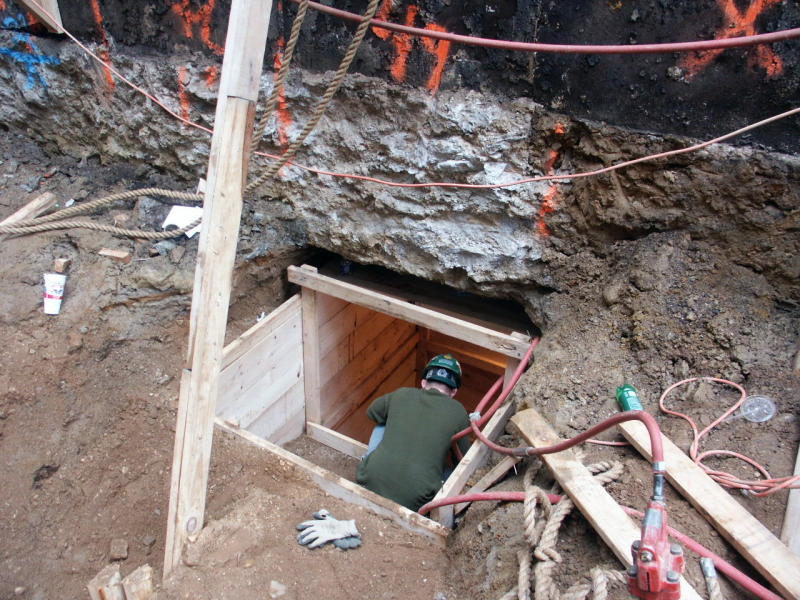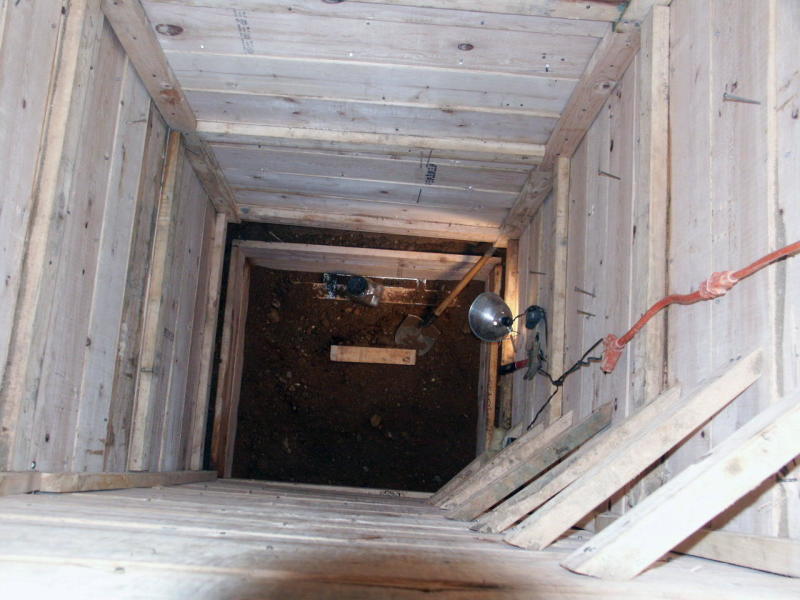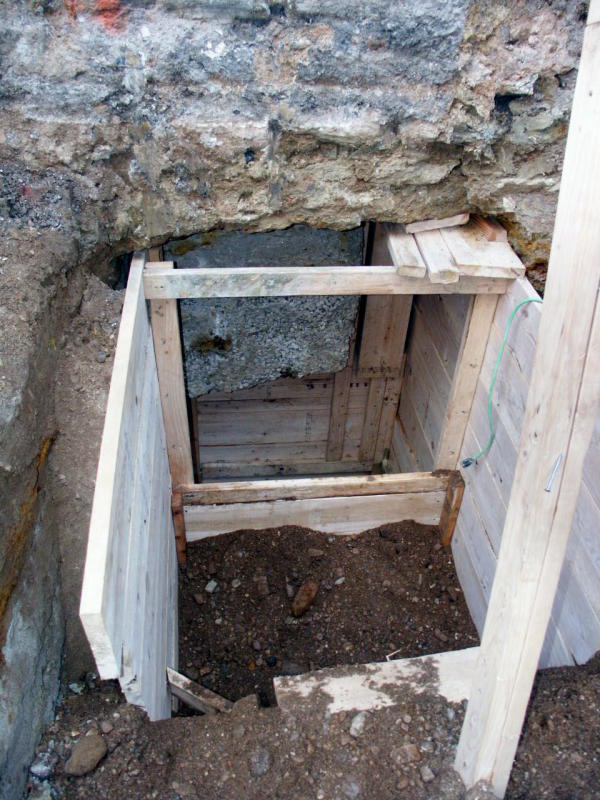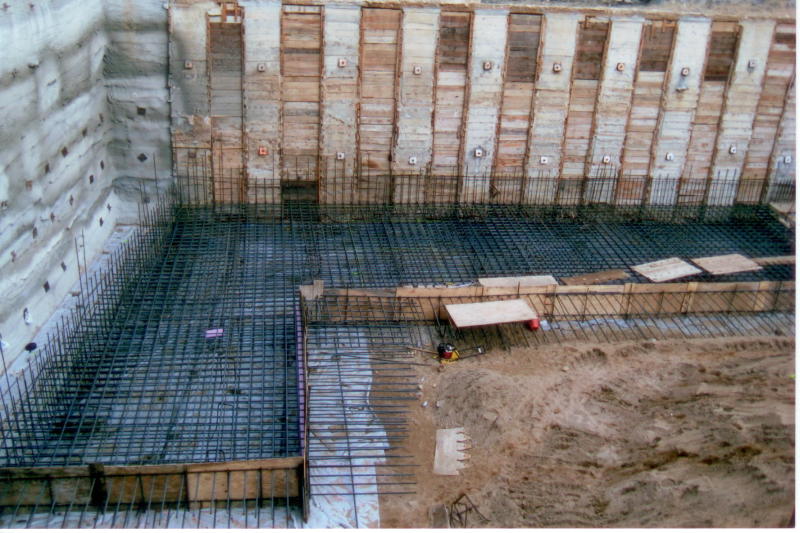30 ft deep excavation is proposed for mat foundation of 50-story highrise right next to 100 years old 4-story stone building with 18" wide stone foundation, 7 ft below grade. Rock is 20 ft below the excavation (50 ft below ground). To minimize settlement of the stone building, geotechnical engineer requires rigid excavation support system that extends to rock that provide stress cutoff and will not cause lateral or vertical settlement of the stone building foundations. I would think underpinning all the way to rock and provide temporary tiebacks with required dewatering and shoring which may be difficult given the high permeability of the material below water table. Secant shaft wall with tiebacks which may serve as wall for the highrise. would the wall be able to function properly and handle the high rise type vertical load and provide lateral support for the old building footings. The mat of the highrise is 15 ft thick and will be poured about 6-12" off the property line.
PS. caissons for the highrise was out of the window.
PS. caissons for the highrise was out of the window.




